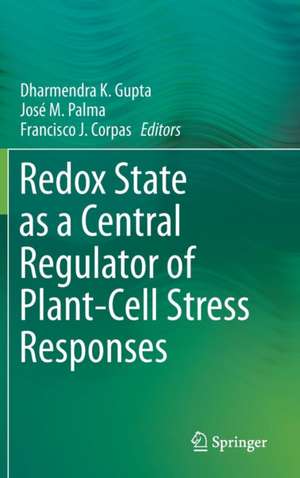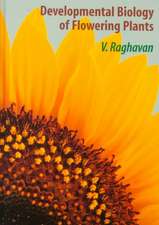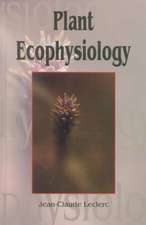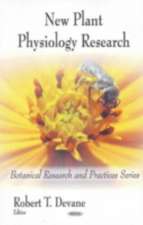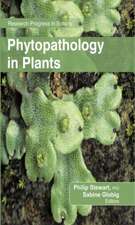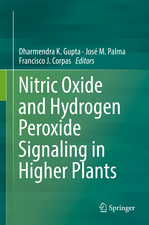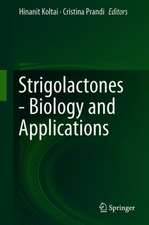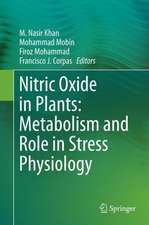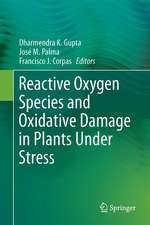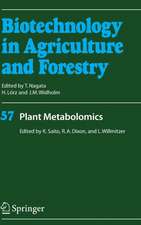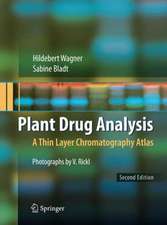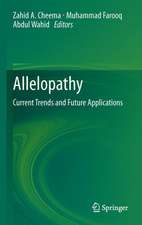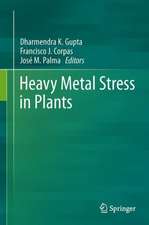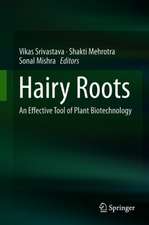Redox State as a Central Regulator of Plant-Cell Stress Responses
Editat de Dharmendra K Gupta, José M. Palma, Francisco J. Corpasen Limba Engleză Hardback – 30 sep 2016
| Toate formatele și edițiile | Preț | Express |
|---|---|---|
| Paperback (1) | 949.42 lei 6-8 săpt. | |
| Springer International Publishing – 15 iun 2018 | 949.42 lei 6-8 săpt. | |
| Hardback (1) | 955.56 lei 6-8 săpt. | |
| Springer International Publishing – 30 sep 2016 | 955.56 lei 6-8 săpt. |
Preț: 955.56 lei
Preț vechi: 1165.32 lei
-18% Nou
Puncte Express: 1433
Preț estimativ în valută:
182.87€ • 198.57$ • 153.61£
182.87€ • 198.57$ • 153.61£
Carte tipărită la comandă
Livrare economică 22 aprilie-06 mai
Preluare comenzi: 021 569.72.76
Specificații
ISBN-13: 9783319440804
ISBN-10: 3319440802
Pagini: 506
Ilustrații: XI, 386 p. 60 illus., 48 illus. in color.
Dimensiuni: 155 x 235 x 22 mm
Greutate: 0.74 kg
Ediția:1st ed. 2016
Editura: Springer International Publishing
Colecția Springer
Locul publicării:Cham, Switzerland
ISBN-10: 3319440802
Pagini: 506
Ilustrații: XI, 386 p. 60 illus., 48 illus. in color.
Dimensiuni: 155 x 235 x 22 mm
Greutate: 0.74 kg
Ediția:1st ed. 2016
Editura: Springer International Publishing
Colecția Springer
Locul publicării:Cham, Switzerland
Cuprins
Cellular redox homeostasis as central modulator in plant stress response.- Plant cell redox homeostasis and reactive oxygen species.- Redox balance in chloroplasts as a modulator of environmental stress response: The role of ascorbate peroxidase and Nudix hydrolase in Arabidopsis.- Physiological processes contributing to the synthesis of ascorbic acid in plants.- Redox state in plant mitochondria and its role in stress tolerance.- Oxidative stress and its role in peroxisome homeostasis in plants.- Glutathione-related enzyme system: Glutathione reductase (GR), Glutathione transferases (GSTs) and glutathione peroxidases (GPXs).- Glutathione metabolism in plants under metal and metalloid stress, and its impact on the cellular redox homeostasis.- Glutathione and related enzymes in response to abiotic stress.- The function of cellular redox homeostasis and reactive oxygen species in plants tolerance to abiotic stresses.- Abiotic stress induced redox changes and programmed cell death in plants- a path to life through death.- The role of ROS and redox signalling during the initial cellular response to abiotic stress.- The cadmium-binding thioredoxin o acts as an upstream regulator of the redox plant homeostasis.- Arsenic tolerance in plants: Cellular maneuvering through sulfur metabolites.- Regulation of stomatal responses to abiotic and biotic stresses by redox state.- The antioxidant power of Arginine/Nitric Oxide attenuates damage induced by methyl viologen herbicides in plant cells.- Protein S-Nitrosylation and S-Glutathionylation as regulators of regulators of redox homeostasis during abiotic stress response.
Notă biografică
Dharmendra K. Gupta is a senior environmental biotechnology scientist at the Institut für Radioökologie und Strahlenschutz, Gottfried Wilhelm Leibniz Universität Hannover in Germany and has published more than 80 research papers/review articles in peer reviewed journals and has edited nine books. His research interests include abiotic stress by heavy metals/radionuclides and xenobiotics in plants; antioxidative system in plants, and environmental pollution (heavy metal/radionuclide) remediation through plants (phytoremediation).
José M. Palma has more than 30 years’ experience in plant sciences and related fields. He also served as the deputy director and later director of the Estación Experimental del Zaidín (EEZ-CSIC), Granada, Spain. He has published more than 100 research papers/review articles in peer reviewed journals and edited five books.
Francisco J. Corpas is a staff member at the Spanish National Research Council (CSIC) and has more than 24 years of research experience in the metabolism of antioxidants and nitric oxide in higher plants under physiological and adverse environmental conditions. At present, he is the head of the Department of Biochemistry, Cell and Molecular Biology of Plants at the research instituteEstación Experimental del Zaidín-CSIC in Granada, Spain. He has published more than 120 research papers/review articles in peer reviewed journals and has edited five books.
José M. Palma has more than 30 years’ experience in plant sciences and related fields. He also served as the deputy director and later director of the Estación Experimental del Zaidín (EEZ-CSIC), Granada, Spain. He has published more than 100 research papers/review articles in peer reviewed journals and edited five books.
Francisco J. Corpas is a staff member at the Spanish National Research Council (CSIC) and has more than 24 years of research experience in the metabolism of antioxidants and nitric oxide in higher plants under physiological and adverse environmental conditions. At present, he is the head of the Department of Biochemistry, Cell and Molecular Biology of Plants at the research instituteEstación Experimental del Zaidín-CSIC in Granada, Spain. He has published more than 120 research papers/review articles in peer reviewed journals and has edited five books.
Textul de pe ultima copertă
This book provides an up-to-date overview of redox signaling in plant cells and its key role in responses to different stresses. The chapters, which are original works or reviews, focus on redox signaling states; cellular tolerance under different biotic and abiotic stresses; cellular redox homeostasis as a central modulator; redox homeostasis and reactive oxygen species (ROS); redox balance in chloroplasts and mitochondria; oxidative stress and its role in peroxisome homeostasis; glutathione-related enzyme systems and metabolism under metal stress; and abiotic stress-induced redox changes and programmed cell death. The book is an invaluable source of information for plant scientists and students interested in redox state chemistry and cellular tolerance in plants.
Caracteristici
Focuses on redox-regulated plant defenses against environmental stresses Explains redox homeostasis in plant cells With contributions by numerous experts in the field Includes supplementary material: sn.pub/extras
